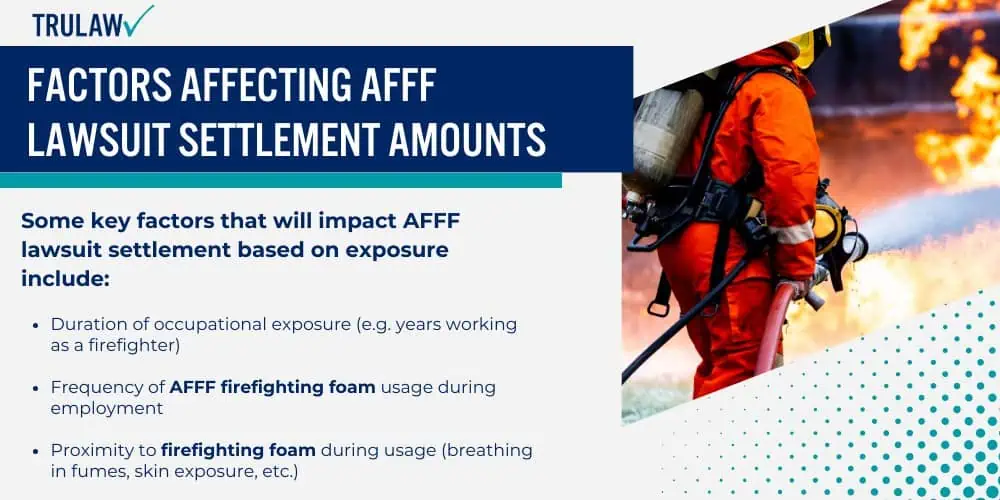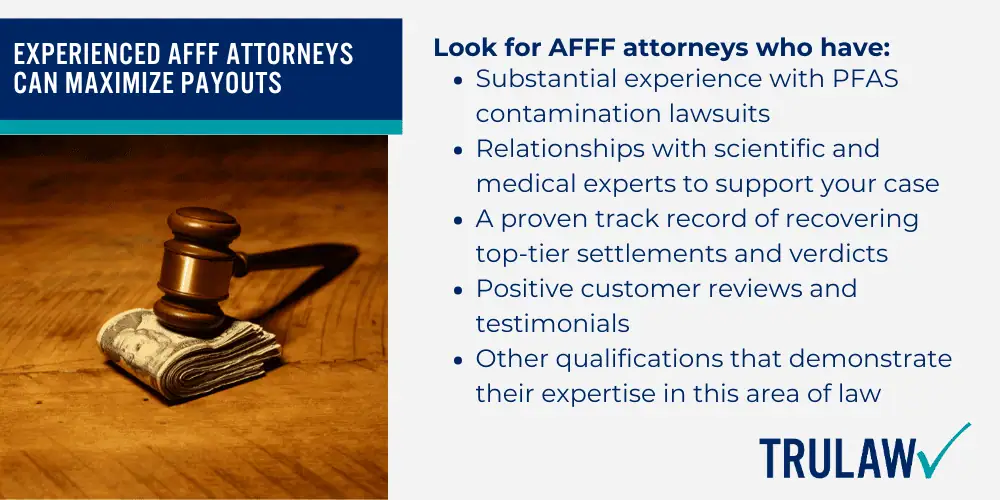The amount of compensation each plaintiff receives in the AFFF firefighting foam lawsuits will depend on several key factors.

The two most important variables that will determine AFFF lawsuit settlement amounts are the duration and severity of the plaintiff’s AFFF exposure and the specific type of cancer they developed.
Duration & Severity of AFFF Exposure Impacts Payouts
Plaintiffs who had frequent, long-term occupational exposure to AFFF firefighting foam , such as firefighters who regularly used the foam, are likely to receive the highest lawsuit payouts.
Those with more limited or short-term exposures will likely fall into lower settlement tiers and receive smaller amounts.
The cumulative extent of a plaintiff’s aqueous film-forming foam exposure over time is one of the most significant factors impacting settlement values.
Regular exposure over many years puts plaintiffs at the greatest risk of developing serious AFFF-caused cancer and health conditions , increasing their lawsuit payout.
Some key factors that will impact AFFF lawsuit settlement based on exposure include:
- Duration of occupational exposure (eg years working as a firefighter)
- Frequency of AFFF firefighting foam usage during employment
- Proximity to firefighting foam during use (breathing in fumes, skin exposure, etc.)
- Use of personal protective equipment to mitigate exposure
- Other factors that may emerge as the litigation progresses
How Cancer Type Influences AFFF Settlement Amounts
The specific type of cancer diagnosed is the other major variable affecting AFFF lawsuit settlement amounts.
Scientific evidence has most strongly linked firefighting foam cancer to:
- Kidney cancer
- Pancreatic cancer
- Testicular cancer
- Other cancers that research may link to AFFF exposure in the future
Complaintiffs with these cancer types will likely receive the highest tier payouts.
Those with prostate or other cancers less directly tied to AFFF firefighting foam MDL will receive lower settlement amounts, as well as plaintiffs with non-cancerous conditions like ulcerative colitis or thyroid disease.





